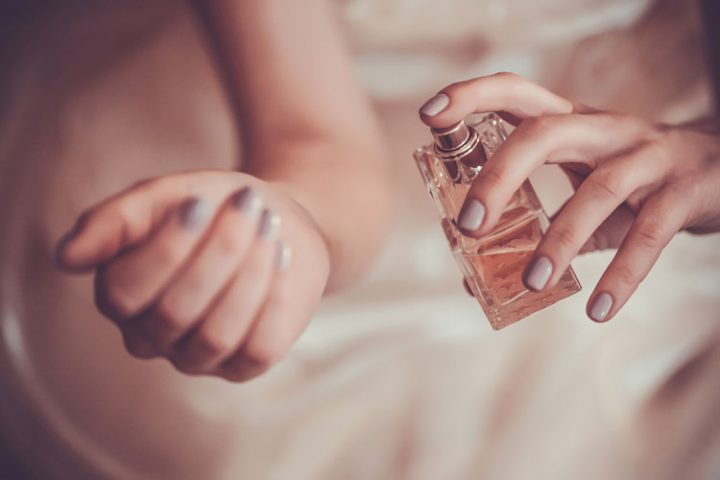
Australian women are having a love affair with fragrance. Cosmetic counters are dripping with scent and images of alluring models promising her beauty, love and desirability as long as she wears that fragrance. The media is also able to reach her by linking scent with desirable qualities such as ‘sensuality,’ and ‘confidence.’ They know that there is a very powerful link between scent, memory and emotion and this is becoming increasingly evident in their campaigns.
Until the 20th century, all perfumes were made from ingredients derived directly from nature. The use of synthetic fragrance was borne of the industrial revolution of the early 1900’s. Chemists were now able to artificially reproduce fragrances resembling flowers, fruits and woods in a laboratory with synthetic chemicals at a fraction of the cost. As is often the case, economics gave way to purity.
The National Academy of Sciences reports that 95% of the chemicals used in fragrances used for formulating personal care products are synthetic compounds derived from petroleum, including known toxins capable of causing cancer, birth defects, central nervous system disorders and allergic reactions. The average synthetic perfume may contain up to 500 individual man-made chemical ingredients. Source: Medical News Today, 2008
In 2008 the American Association of Occupational Health for Nurses partnered with the Asthma and Allergy Foundation of America, and the University Of Maryland Environmental Health Education Center to discuss the importance of reducing exposure to synthetic fragrance in the workplace. It was discovered that 20% of medical employees were physically affected by synthetic fragrance.
Of the 150 highest volume artificial chemicals used in fragrance products, almost 60% are known to be toxic at certain levels. Since women absorb an average of 2 kilograms of artificial chemicals through their skin each year, the beauty industry needs to be aware of ingredients present in the products they recommend to their clients. Synthetic fragrance contain microscopic particles that can enter the body through inhalation and ingestion through the nose and mouth, and absorption through the skin. Once in the body they are absorbed into the bloodstream, transported throughout the body and may be stored for prolonged periods.
Documented adverse reaction to artificial fragrance includes:
- Skin allergy and light induced allergy
- Headache and migraine
- Allergy (sneezing, watery eyes, sinus problems)
- nausea
- Respiratory problems (wheezing, sore throat, cough, chest tightness, asthma)
- Neurotoxicity (inability to concentrate, dizziness, convulsions, hyperactivity, fatigue)
It is also often difficult to determine whether or not a product contains artificial fragrance. Any product that states ‘parfum’, ‘fragrant oil’ or ‘fragrance’ as an ingredient, indicates that this is an artificial fragrance. Note that ‘fragrant oil’ is artificial and ‘essential oil’ or ‘absolute’ is a natural botanical ingredient. All fragrance usually will appear towards the end of the ingredient list.
In contrast to artificial fragrance, natural essential oils when added to skin care, make-up and natural perfume have quite a different effect. Essential oils contain elements that have a healing and stimulating biological effect on the body and an emotional effect on the brain. Evidence suggests that essential oils actually enhance mental health creating a feeling of well being and perpetuating uplifting states of mind. Some citrus oils are used to treat dull skin, oily skin, scars, and wrinkles and have an antidepressant effect. Many floral essential oils such as jasmine are used to treat dry and sensitive skin and also have an uplifting affect on those wearing the fragrance.
Most health conscious cosmetic formulators are now turning to theses natural essential oils rather that their artificial counterparts. Although far more costly than using artificial fragrance, the benefits to consumers are significant. When given the correct information, clients will usually opt for product free of potential toxins and with the therapeutic benefits.
We have certainly lost something precious in the fragrance evolution. No chemist in the world can recreate the depth and magic of true tuberose or jasmine. The natural scent chemistry of a rose comprises an intricate collection of thousands on botanical elements. The human body has evolves alongside the plant kingdom. It makes perfect sense that our body chemistry is designed to work in synergy with these natural substances.
But rather than incite industry panic, it is important to note that not all man-made chemicals are harmful. Furthermore, not all individuals will react adversely to artificial chemicals. However, it is important as an industry professional to educate your client on all potential risks and recommend the very best (and often natural) choices for your clients. Armed with the correct information, you will be better equipped to make informed suggestions regarding suitable skin care, make-up and perfume for your clients.
